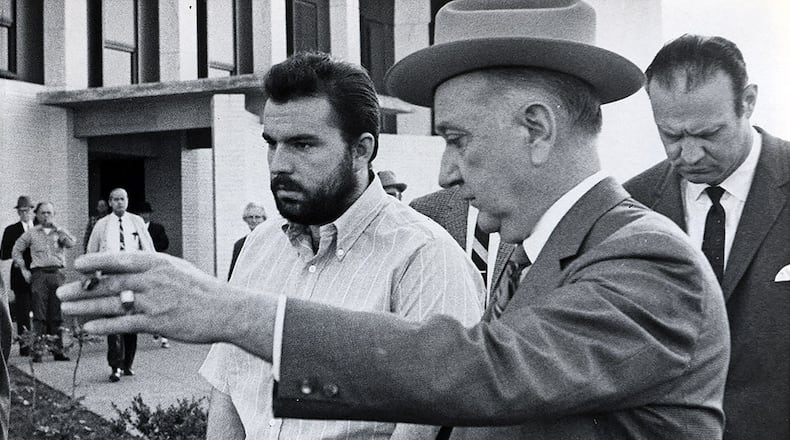Q: Was there a case in Georgia sometime in the 1960s when somebody buried a college student in a box for the ransom? Do you know anything about this?
A: Atlanta's history, like practically all large cities, is filled with spectacular crimes.
And Gary Krist’s plan to abduct Barbara Jane Mackle, put her in a box in a hole in the ground and collect the ransom is part of that lore.
Krist came up with the idea to kidnap Mackle, an Emory student and daughter of a wealthy Florida developer.
Mackle had the flu and was staying with her mother at a local hotel on Dec. 17, 1968, when Krist showed up in the early morning hours, talked his way into the room and grabbed her.
Krist had already built and prepared the 8-foot-long box where Mackle would stay while he demanded money from her family. It included air hoses, a powered fan, pumps to keep it from flooding, candy, water, a light and even toilet paper, as written in “Atlanta and Environs: A Chronicle of its People and Events, Volume 3.”
Krist and accomplice Ruth Eisemann-Schier drove Mackle to a spot near Gwinnett County’s Berkeley Lake, where they put her in the box, snapped a photo of her holding a sign with the word “Kidnapped” written on it, and buried her.
The kidnappers sent a $500,000 ransom note to Robert Mackle, Barbara’s father, who met the demand.
After he received the money, Krist called the FBI on Dec. 20, to let them know where Barbara was buried.
Officers and agents found her – still alive – and pulled the box out of the ground that afternoon, more than three days after she was buried. The location was just yards off of South Berkeley Lake Road at Peachtree Industrial Boulevard in Gwinnett County, according to a previous AJC article.
Krist bought a boat with some of the ransom money and was planning to head across the Gulf of Mexico to Texas, but was found and apprehended by police on Dec. 22 in Charlotte County, Fla.
Eisemann-Schier remained on the run for nearly three months before she was arrested in Oklahoma.
Mackle and Krist both wrote books about the ordeal. Mackle, with Gene Miller, wrote "83 Hours 'Til Dawn," which was turned into two TV movies, and Krist wrote "Life: The Man Who Kidnapped Barbara Jane Mackle."
Q: When the Atlanta seal appears on the news, it has “Resurgens” on it. Why?
—Shirley Oliver, Jonesboro
A: Rising from the flames of being burned during the Civil War is a huge deal in Atlanta.
The city’s seal not only features a phoenix, the mythological creature that flew out of the ashes, but it also includes the Latin word Resurgens, which means rising again or resurrection.
That’s exactly what Atlanta did after the Civil War.
Credit: JASON GETZ / jgetz@ajc.com
Credit: JASON GETZ / jgetz@ajc.com
About the Author



